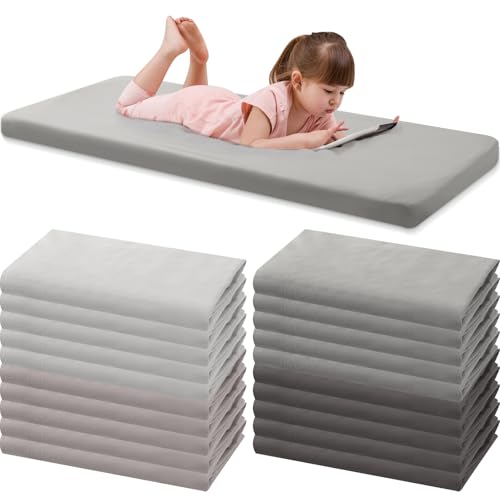
Cabbage is a versatile and nutritious vegetable that can be enjoyed in many different ways. From salads to soups, cabbage adds a satisfying crunch and subtle sweetness to a variety of dishes. However, preparing cabbage can be a bit intimidating for some. In this article, we will guide you through the process of coring and wedging a cabbage, making it easier for you to incorporate this nutrient-rich veggie into your meals.
Before you start, it’s important to choose a fresh and firm cabbage. Look for a cabbage head that feels heavy for its size and has crisp, tightly packed leaves. Once you have your cabbage, the first step is to remove the tough core.
To core a cabbage, start by placing it on a cutting board, stem side down. Use a sharp knife to carefully cut around the core, at an angle, until you have removed a cone-shaped section. Make sure to cut deep enough to remove all of the tough core, but be careful not to cut into the leaves too much.
Once the core is removed, you can proceed to wedge the cabbage. Start by cutting the cabbage head in half, from top to bottom. Then, place each half on its flat side and cut it into quarters. Finally, cut each quarter into wedges of your desired thickness.
Now that you know how to core and wedge cabbage, you can use it in a variety of recipes or as a side dish on its own. Whether you sauté it, roast it, or use it in a salad, cabbage adds a flavorful and nutritious element to any meal. So go ahead, grab a fresh cabbage and get ready to enjoy this versatile veggie in all sorts of delicious ways!
Selecting the Perfect Cabbage
When it comes to selecting a cabbage, there are a few key factors to consider in order to ensure you choose the perfect one for your needs.
1. Look for firmness: A good cabbage should feel firm and dense when you squeeze it gently. Avoid cabbages that feel soft or have any mushy spots, as these are signs of spoilage.
2. Check the weight: Heavier cabbages usually indicate that they are fresher and denser. Select a cabbage that feels heavy for its size.
3. Inspect the leaves: The outer leaves of the cabbage should be crisp and tightly packed. Avoid cabbages with wilted, discolored, or damaged leaves.
4. Consider the size: Choose a cabbage that is the right size for your needs. Smaller cabbages are often sweeter and more tender, while larger cabbages are better suited for making sauerkraut or stuffing.
5. Look for vibrant color: A fresh cabbage should have bright, vibrant green or purple leaves. Avoid cabbages with dull or faded colors, as this can indicate age or poor quality.
6. Trust your senses: Finally, use your sense of smell and sight to assess the cabbage. It should have a clean, fresh scent and should not have any signs of mold or rot.
By considering these factors and following your intuition, you’ll be able to select the perfect cabbage for your recipes and ensure a delicious outcome every time!
Tools and Equipment Needed
To properly core and wedge cabbage, you will need the following tools and equipment:
- A sharp knife: It is essential to have a sharp knife to effectively cut through the tough cabbage leaves and core. Ensure that your knife is sharp to make clean and precise cuts.
- Cutting board: A sturdy cutting board will provide a firm surface for you to safely cut and wedge the cabbage.
- Bowl or container: Prepare a clean bowl or container to collect the cored and wedged cabbage pieces.
- Optional: Vegetable peeler – If you prefer to remove the outer leaves before coring and wedging, a vegetable peeler can be handy to easily remove the tough outer layers.
Having these tools ready will make the process of coring and wedging cabbage easier and safer. Make sure to always exercise caution while handling sharp objects and keep your fingers away from the knife blade.
Step-by-Step Guide to Coring a Cabbage
Coring a cabbage is an essential step in preparing it for cooking or slicing. Follow these simple steps to core a cabbage like a pro:
Step 1:
Start by removing the loose outer leaves of the cabbage. These leaves can be tough and dirty, so it’s best to discard them.
Step 2:
Place the cabbage on a cutting board with the stem side facing upwards.
Step 3:
Using a sharp knife, make a deep cut around the stem at an angle, forming a circular incision.
Step 4:
Insert the knife directly into the incision and cut around the stem in a circular motion, gradually deepening the cut. Be careful not to cut too deep to avoid wasting any edible portions.
Step 5:
Gently twist and pull the stem to remove it from the cabbage. If the stem is too difficult to remove, make an additional cut around it and try again.
Step 6:
Inspect the cavity left by removing the stem. Ensure there are no remaining tough or fibrous parts that need to be removed.
Step 7:
Rinse the cabbage thoroughly under cold water to remove any dirt or debris that may be trapped in the leaves or cavity.
Step 8:
Now, your cabbage is cored and ready for further preparation according to your recipe!
Remember, coring a cabbage is a simple but crucial step to ensure that your cabbage dishes turn out delicious and free from any tough or bitter parts.
Step-by-Step Guide to Wedging a Cabbage
Step 1: Start by choosing a fresh cabbage from your local market or grocery store. Look for a cabbage that is firm and heavy for its size.
Step 2: Wash the cabbage under running water to remove any dirt or debris on the outer leaves. Pat it dry with a clean towel.
Step 3: Place the cabbage on a cutting board and remove the tough outer leaves. These leaves are usually darker green and may have some dirt or blemishes.
Step 4: Using a sharp knife, cut off the bottom stem of the cabbage to create a flat surface. This will make it easier to cut and core the cabbage.
Step 5: Stand the cabbage upright on the cutting board with the flat surface at the bottom. Carefully slice the cabbage in half, starting from the top and all the way down through the stem end. Use caution and keep your fingers away from the knife blade.
Step 6: Lay each half of the cabbage flat side down on the cutting board. With the knife, make a diagonal cut through the core of each half, removing the tough core portion.
Step 7: Once the core is removed, you can proceed to wedge the cabbage according to your recipe’s instructions. To wedge the cabbage, start by cutting each half into quarters. Then, cut each quarter into smaller wedges, depending on the desired size.
Step 8: After wedging the cabbage, you can use it in various recipes such as coleslaw, stir-fry, or sautéed dishes.
Step 9: Store any leftover wedged cabbage in an airtight container in the refrigerator for up to a week.
Congratulations! You have successfully learned how to core and wedge a cabbage. Enjoy cooking with your freshly prepared cabbage!
Tips and Tricks for Core and Wedge Cabbage
When it comes to preparing cabbage, coring and wedging it properly can make all the difference in your cooking. Here are some tips and tricks to help you core and wedge cabbage like a pro:
Choose the Right Cabbage
Before you start coring and wedging cabbage, make sure you choose the right one. Look for a cabbage head that is firm, with crisp and vibrant outer leaves. Avoid any heads that have wilted or discolored leaves, as they may not be fresh.
Tools You’ll Need
To core and wedge cabbage, you’ll need a few basic tools:
| Knife | A sharp knife will make it easier to cut through the cabbage. |
| Cutting Board | Use a sturdy cutting board that provides a stable surface for cutting. |
| Vegetable Peeler | A vegetable peeler can be useful for removing the tough outer leaves. |
| Corer | A corer, also known as a cabbage corer, can help you remove the core more easily. |
Steps for Coring and Wedging Cabbage
Follow these steps to core and wedge cabbage:
- Start by removing any wilted or discolored outer leaves.
- Place the cabbage on its side on the cutting board.
- Using a sharp knife, cut off the stem end of the cabbage to create a flat surface.
- Insert the corer deeply into the cabbage, pushing it through the core.
- Twist the corer to loosen and remove the core from the cabbage.
- With the core removed, cut the cabbage head in half vertically.
- Place each half of the cabbage flat-side down on the cutting board.
- Make additional cuts to create cabbage wedges of your desired thickness.
Once you have cored and wedged your cabbage, you can use it in a variety of recipes, such as coleslaw, stir-fry, or braised cabbage dishes. Remember to always wash the cabbage thoroughly before using it in your cooking.
With these tips and tricks, you’ll be able to core and wedge cabbage quickly and efficiently, saving you time and making your recipes taste even better!
Serving and Enjoying Your Core and Wedge Cabbage
Once you have cored and wedged your cabbage, there are many delicious ways to serve and enjoy it. Here are a few ideas to get you started:
Cabbage Salad
A simple and refreshing option is to use the core and wedge cabbage in a salad. Thinly slice the wedges and toss them with your favorite dressing, such as a tangy vinaigrette or creamy ranch. You can also add other vegetables like cherry tomatoes, cucumber, and carrots for added flavor and crunch. The cabbage provides a nice, crisp texture to the salad.
Roasted Cabbage Wedges
If you prefer a heartier dish, try roasting the cabbage wedges. Lightly brush the wedges with olive oil and season with salt, pepper, and other herbs or spices of your choice. Roast them in the oven at 400°F (200°C) for about 20-25 minutes, or until the edges are golden brown and crispy. The roasted cabbage wedges are tasty on their own as a side dish or can be served with your favorite dipping sauce.
Tip: For added flavor, you can sprinkle grated Parmesan cheese or drizzle balsamic glaze over the roasted cabbage wedges before serving.
Stir-Fried Cabbage
For a quick and healthy stir-fry, heat a bit of oil in a pan and add thinly sliced cabbage wedges. Cook over medium-high heat for 4-5 minutes, or until the cabbage is tender-crisp. Add your favorite stir-fry sauce and any other vegetables or protein of your choice, such as sliced bell peppers, mushrooms, or tofu. Serve the stir-fried cabbage on its own or over rice or noodles for a satisfying meal.
Remember: Don’t discard the core of the cabbage! It can be used in other recipes such as soups, stews, or even pickled as a delicious condiment.
These are just a few suggestions for serving and enjoying your core and wedge cabbage. Feel free to get creative and experiment with different seasonings and cooking methods to find your own favorite way to enjoy this versatile vegetable.






